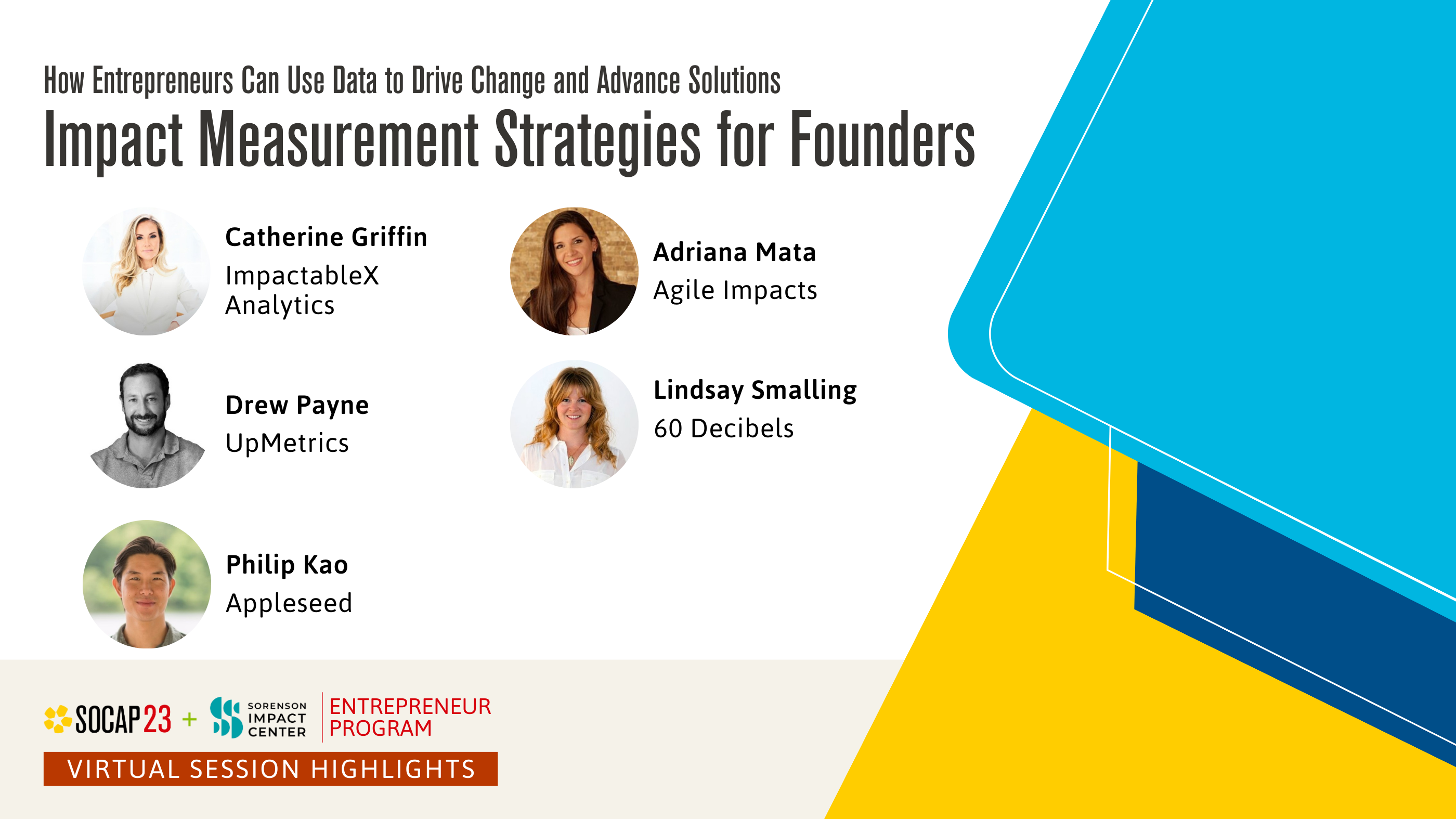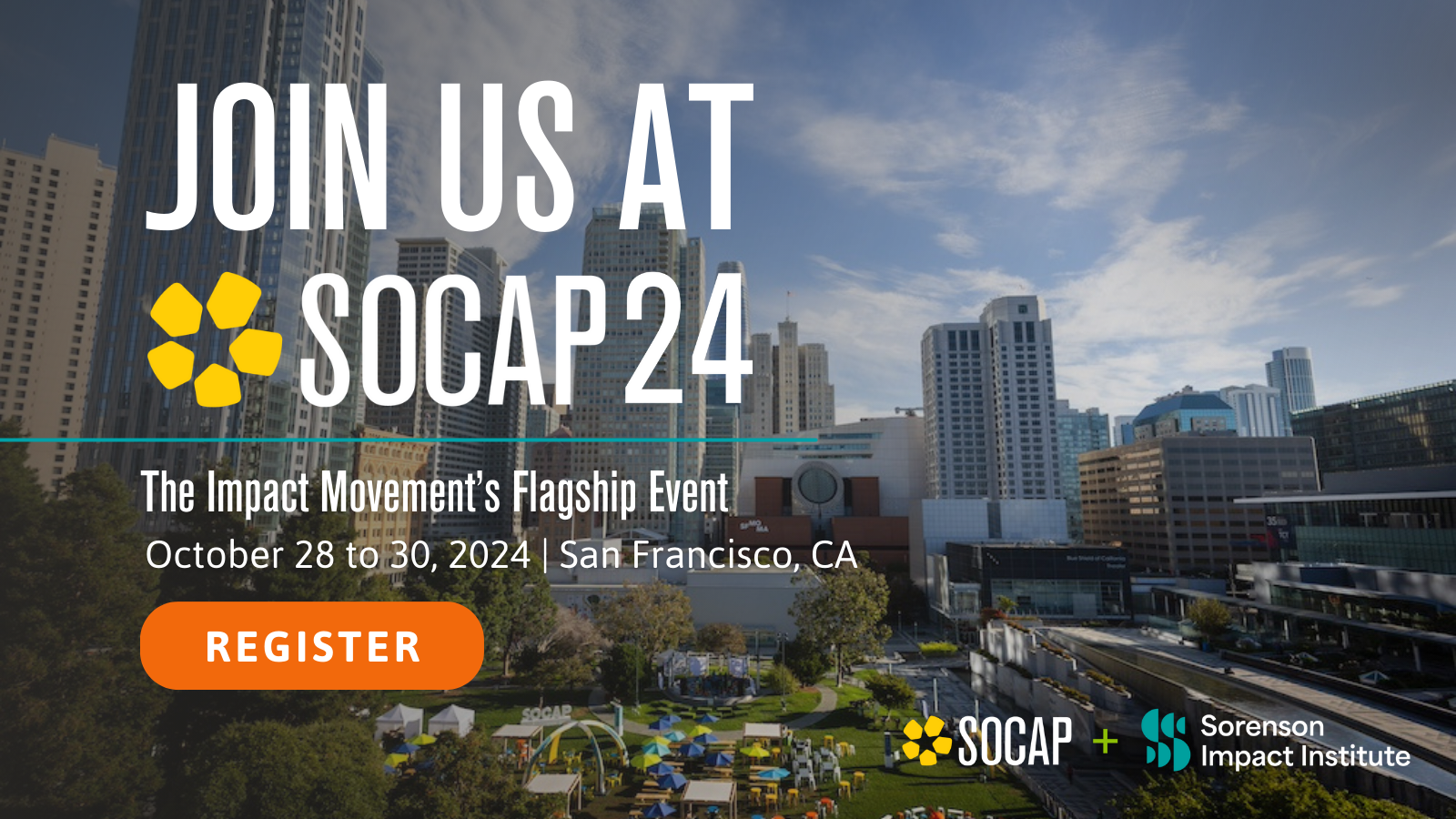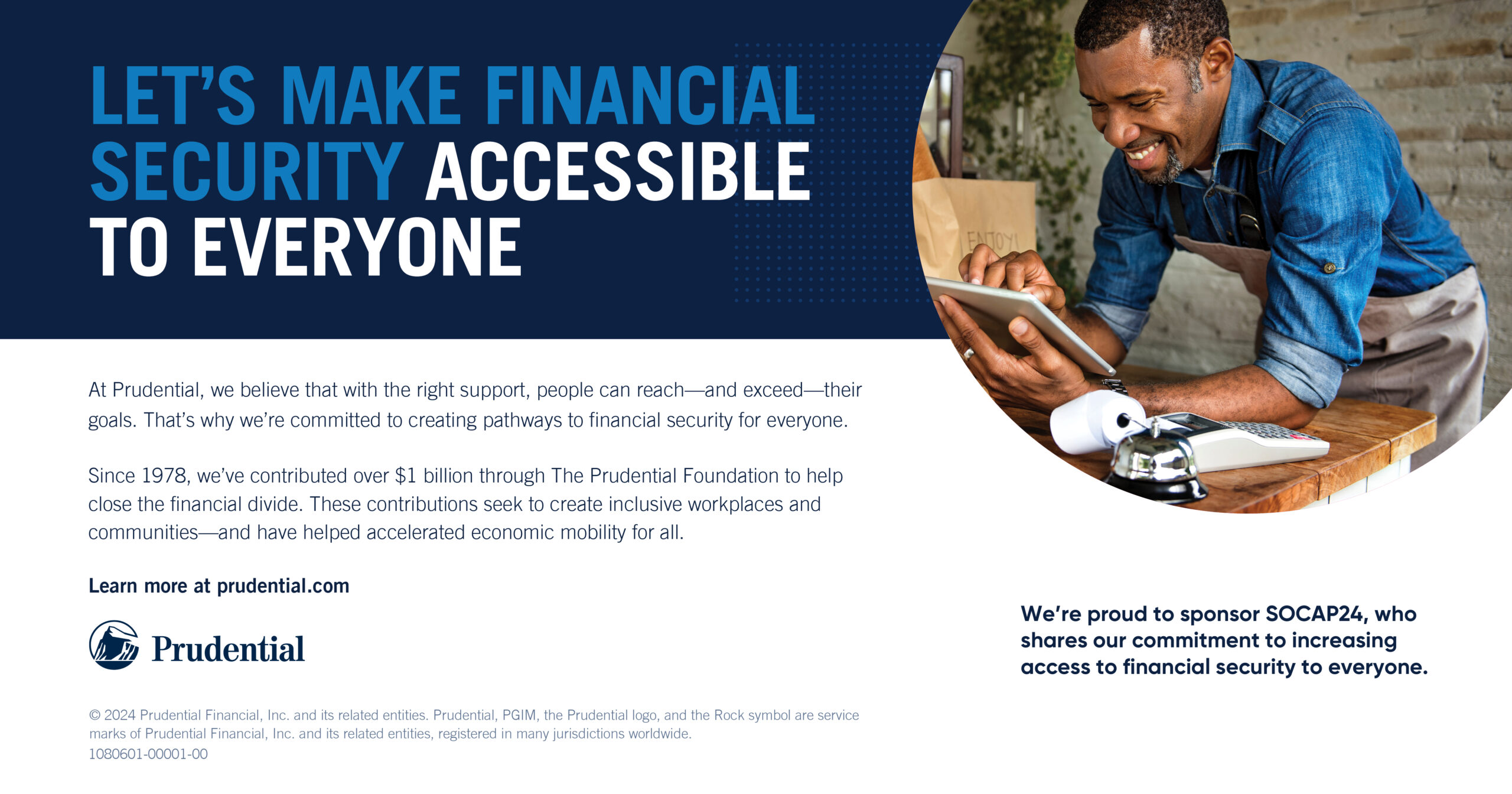How Entrepreneurs Can Use Data to Drive Change and Advance Solutions
As they launch and build social enterprises, founders also seek to measure and manage their business impact. This year’s SOCAP23 Entrepreneur Program includes six monthly strategy tracks — including August sessions on strategies and tools for impact measurement and management — to help founders enhance their impact and develop a supportive framework for their businesses.
The virtual sessions for founders are facilitated by a variety of subject matter experts. We’re grateful for the knowledge, time, and guidance they are sharing with the founders and the broader SOCAP community.
At SOCAP23, you can hear from the SOCAP23 Entrepreneur Program cohort when they present on stage about the unique challenges their companies are addressing. They’ll also be actively connected to funders through deal rooms. Register now to join them October 23-25 at Yerba Buena Center for the Arts in San Francisco.
Find highlights and takeaways below from the August sessions, which provided tips on impact measurement that founders can use to connect with partners and advance their solutions. Previous sessions focused on innovative financing and self-advocacy in July, business growth tools and models in June, team leadership and culture development in May, and holistic wellness in April. Watch for additional highlights in the months leading up to SOCAP23.
Considering Tools for Impact Measurement
Presented by Catherine Griffin of ImpactableX Analytics, which helps founders forecast and track their social and environmental impact, giving them the data to differentiate themselves and the tools to build businesses that effectively execute on their mission. Each ImpactableX model generates analytics that help engage impact investors by articulating the impact multiple of capital and the impact multiple of revenue, lending insights into the relative impact leverage of each dollar invested and the efficiency of a business model as a lever for impact.
Takeaways and highlights:
- Impact investors are increasingly interested in data that showcases the impact that investees create. They also are increasingly concerned about greenwashing in the impact ecosystem.
- The plethora of impact data metrics systems and management platforms can make it challenging for founders and investors to identify effective options.
- Most founders, especially those starting their impact measurement journeys, should focus on direct and simple impact measurement strategies. The UN Sustainable Development Goals are a useful starting guide. Other tools like IRIS can help create a common language around impact measurement collections, especially in conversations with impact investors, but they can be overwhelming for those getting started.
- When starting an impact measurement journey, consider how your intervention is creating a unique difference and your external impact goals. Work from there to build out the metrics that show how you are creating measurable impact in communities or with clients.
Impact Measurement for Startup Success
Presented by Adriana Mata of Agile Impacts, which works to simplify impact measurement and make it readily available. The company uses a theory-of-change approach to impact measurement that provides a roadmap for organizational goals.
Takeaways and highlights:
- How impact measurement can be used as a fundraising engine to attract investment, build relationships with stakeholders, and measure progress toward achieving social and environmental goals.
- Why it’s important to present a theory of change backed by data to demonstrate how your solution is making a difference for people.
- How measurement tools can help identify metrics and outcomes that align with the UN SDGs and tell the story of your impact.
Own Your Story of Impact
Presented by Drew Payne of UpMetrics, which provides an analytics platform to elevate how the impact ecosystem uses data to drive change. UpMetrics blends quantitative data with qualitative insights to elevate the impact ecosystem and connect organizations in their pursuit of lasting change.
Takeaways and highlights:
- Measuring and demonstrating impact can help create better engagement with funders and clients, attract new funding sources, engage new partners, and inform effective storytelling.
- Selecting impact measurement tools can be challenging. Start with what is most relevant to the impact your organization seeks to create, and embed impact measurement in your organizational processes.
- Simplify the process by defining what is most important to measure, collecting metrics, analyzing data, and leveraging data to connect with potential funders and clients.
Impact Data Management for Long-Term Success
Presented by Lindsay Smalling of 60 Decibels, which taps its expertise in social impact measurement to help clients change what it means to run a successful business for greater impact.
Takeaways and highlights:
- Impact measurement standards and metrics began with a very top-down approach, with funders requesting data from those doing the direct work. Instead, it should involve a conversation between funders and founders on effective metrics that showcase impact.
- The varied frameworks and language involved in impact measurement can be overwhelming for funders and founders.
- Phone surveys and other methods of collecting impact metrics can uncover the human side of impact measurement and reflect the true impact that a venture seeks.
How to Drive Uptake of Impactful Solutions
Presented by Philip Kao of Appleseed, a behavioral agency that partners with poverty-fighting organizations. Appleseed helps nonprofits and funders drive the uptake of impactful solutions that foster change and preserve human dignity.
Takeaways and highlights:
- Leverage five criteria to overcome the fact that knowledge does not always change behavior. The five criteria for the desired behavior:
- Non-divisible: Cannot be broken down into smaller behaviors.
- End-state: Will produce the desired outcome.
- High impact: Research and experts show it will make a difference.
- High probability: The target audience is likely to engage in this behavior.
- A level of penetration: Adopted by 20% to 80% of the target audience.
- Identify motivators and barriers to the desired behavior change and channels of communication that can be used to drive change.
- Iterate the process to emphasize what’s working.






